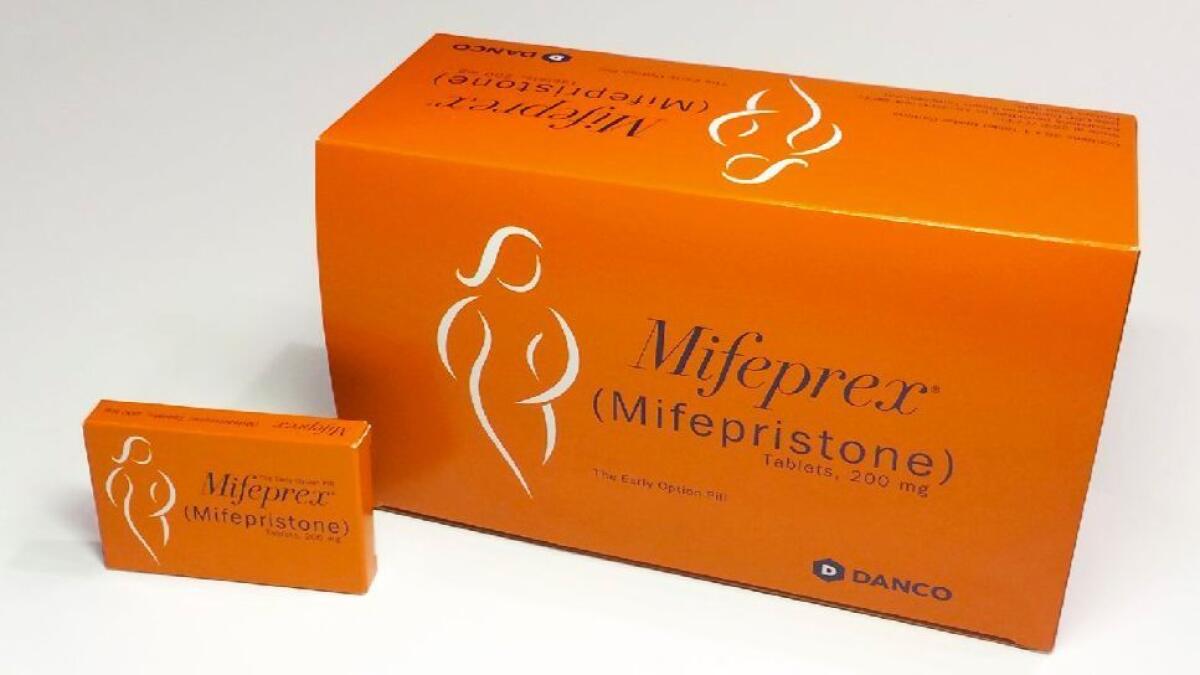Are restrictions on the ‘abortion pill’ politics or science?

The Food and Drug Administration’s restrictions on the dispensing of mifepristone — one half of the two-drug cocktail used to end a pregnancy in its first 10 weeks — “no longer makes clinical sense” and should be “expeditiously withdrawn,” experts argue in the New England Journal of Medicine.
As a key component of a “medical” abortion, the drug marketed as Mifeprex has been controversial from the start. After it was approved for marketing in the United States in 2000, anti-abortion activists tried to limit its use by pressing the FDA to narrowly circumscribe the ways it can be prescribed, dispensed and used. Then they pushed for states to enact laws requiring strict adherence to the FDA rules. A handful of states complied.
President Trump has called himself a staunchly “pro-life president.” But he has also inveighed against federal regulations and promised drug manufacturers he would be “cutting regulations at a level that nobody’s ever seen before.”
When it comes to Mifeprex, Trump’s anti-regulatory stance could be difficult to square with anti-abortion activists’ longstanding strategy of using regulations to restrict access to a medication they oppose.
After “sixteen years of overregulation,” the experts wrote in the venerable medical journal, it’s “time to unburden Mifeprex.”
The essay, by specialists in obstetrics and gynecology, public health and regulatory law, comes a year after the FDA loosened a range of restrictions on the prescribing of the abortion drug. Those changes “will undoubtedly have substantial benefits,” wrote the 10 authors, who call themselves the “Mifeprex REMS Study Group.”
But the FDA should now withdraw the REMS — short for “risk evaluation and mitigation strategy” — that tightly regulates the ways in which Mifeprex can be dispensed, the group wrote.
Mifeprex, for instance, cannot be purchased with a doctor’s prescription at a drug store, or ordered online. It can be dispensed only by a specially certified prescriber in a clinic, medical office or hospital. To get it, a patient must attest that she has been briefed on its proper use.
As a prescription drug tagged with the FDA’s strictest level of oversight, Mifeprex is in dangerous company: Only 74 of the roughly 1,750 prescription drugs and biologics approved in the U.S. are considered so potentially hazardous that they require a REMS. Among the others are fentanyl, a highly addictive opiate, and thalidomide, which can cause serious birth defects. The FDA also imposes REMS on drugs that can cause death or irreversible side effects if misused.
More than one-third of American women who seek an abortion in the first eight weeks of pregnancy choose the combination of Mifeprex and misoprostol to induce an abortion outside of a clinic, typically at home.
Over 16 years, Mifeprex has been used by more than 3 million women in the United States, with 19 deaths reported. That safety record is better than many medications that have no REMS restrictions attached, the experts wrote. They compared Mifeprex’s rate of fatal adverse events (0.00063%) to that of a class of erectile dysfunction drugs that includes Viagra, Cialis and Levitra (up to 0.004%) and noted that those drugs have not been tagged with a REMS.
In addition, women who carry a pregnancy to term run a higher risk of death than do those who take the abortion pill, the authors wrote.
In studies of 423,000 women who took Mifeprex, adverse events that were serious but not fatal — such as a hospital admission, a severe infection or the need for a blood transfusion — were relatively rare. Many medications that can induce serious or fatal reactions, including antibiotics and insulin, are not restricted by REMS, the essay authors noted.
Maintaining tight control on Mifeprex not only makes it harder for women to get an early abortion, the group wrote, but also “may impede the development of potentially cheaper, generic mifepristone products.”
Dr. Daniel Grossman, an obstetrician at UC San Francisco, said that by restricting access to the abortion pill, the FDA’s REMS program appears to be increasing the number of later abortions in women who could not get the drug during the first 10 weeks of a pregnancy.
Studying abortion-seeking women in Iowa who were unable to access Mifeprex, Grossman found that such women were rarely dissuaded from getting an abortion — they just had them at a later point in pregnancy, when a surgical procedure was necessary. Later abortions pose greater risks to women, and cost more as well, he said.
“I would hope the FDA would look at the science behind this and make an evidence-based decision,” said Grossman, one of the essay’s authors. “This shouldn’t be a political decision. It should be based on science, which has very clearly shown this is a very safe drug, safer than ones that don’t have this restriction.”
He added that Australia has relaxed its Mifeprex restrictions, making it available — with a prescription — in traditional and mail-order pharmacies.
“Certainly the sky hasn’t fallen there,” he said.
Scientists study ways to preserve world heritage sites damaged in armed conflicts
Found: Seven rocky Earth-sized planets in orbit around a nearby star
Same-sex marriage laws helped reduce suicide attempts by gay, lesbian and bisexual teens, study says




